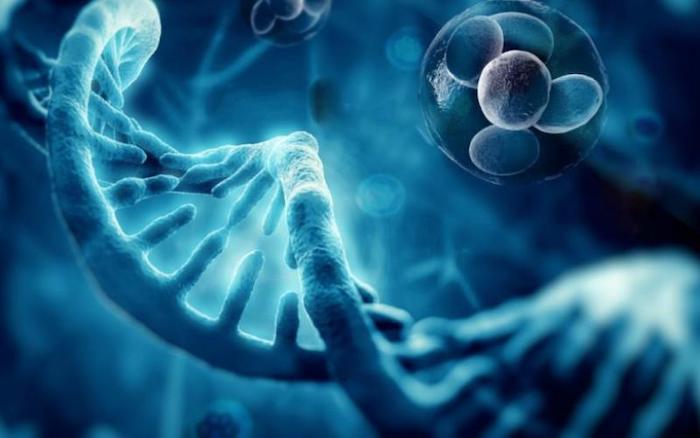
Complex regional pain syndrome not only has complex pain pathways but can also be challenging to treat. New NIH grant research on stem cells could provide more care options, but will payers cover regenerative medicine?
The National Institutes of Health (NIH) recently awarded researchers at the Cleveland Clinic a $5.5 million grant to develop a stem cell treatment for complex regional pain syndrome (CRPS). This is the first federally funded research to date on mesenchymal stem cells for pain and the largest grant to support studies on CRPS.
Stem cell therapy is a type of regenerative medicine, a relatively new interdisciplinary field. "Stem cells can replace, restore, repair, and regenerate tissues," explained Alan D. Kaye, MD, Ph.D., anesthesiologist and director of the Pain Program Fellowship at Louisiana State University School of Medicine. "They're being studied for many different disease states, and CRPS is an exciting target related to stem cell therapy."
In a press release announcing the funding, Jianguo Cheng, MD, Ph.D., medical director of Cleveland Clinic's Consortium for Pain and the principal investigator on the study, noted, "This is an unprecedented opportunity to tackle this major problem using a novel mechanism guided by cellular interactions and addressing the condition on a cellular and molecular level."
If this approach is effective, it could open new treatment options for people with other chronic pain conditions. Chronic pain affects more than 50 million American adults¹ and is one of the leading causes of disability and disease worldwide.
The Complexity of CRPS
Complex regional pain syndrome is, as the name suggests, a complex disease thought to result from the dysregulation of neuroimmune pathways that regulate pain. Although the effects of CRPS are usually felt in the peripheral nervous system, the disease is essentially a problem of the central nervous system, a problem with the way that pain is perceived, explained Jay Joshi, MD, anesthesiologist and pain management physician, and CEO and medical director at the National Pain Centers in Vernon Hills, IL. "There's a whole domino effect that occurs, and there are multiple subsystems involved and multiple problems that occur with the disease, but the crux of the disease is in the central nervous system."
According to the National Institute of Neurological Disorders and Stroke (NINDS), CRPS involves prolonged and debilitating chronic pain after an injury, usually to an arm or leg. For most people with CRPS, the pain improves over time and eventually resolves, but for some, the pain becomes chronic. Perhaps as many as 200,000 people in the US are living from CRPS. It can occur to anyone at any age but is more common in women than in men. The most common type of injury precipitating CRPS is a fracture, although surgery, sprains, and lacerations can also damage nerves and lead to CRPS.
Typically, CRPS is treated with one or more therapies: medications, including biologics, opioids, and NSAIDs; physical therapy and behavioral therapies; and spinal cord stimulation and nerve blocks.
Regenerative Medicine May Reduce CRPS Pain and Inflammation
Regenerative medicine may be a powerful new addition to the arsenal for treating CRPS, has been very challenging for pain physicians to manage.
However, this type of therapy does not treat the ultimate cause of the disease but instead treats the inflammatory effects and perhaps some of the tissue damage. The process can give patients genuine relief, he said, but it does not address the mechanism behind the pain. "A lot of treatments that have shown promise in CRPS – not just regenerative medicine – miss the link to the complexity of the disease. They're not treating the central problem; they're treating a peripheral effect of CRPS," said Dr. Joshi. "CRPS is a problem with the way the brain interprets pain, and no stem cell is going to change that."
Dr. Joshi would like to see funding for research that investigates the root cause. "I would love it if we could focus on trying to reverse the disease itself." However, he added that until we get there, therapies that can ease the burden of pain are welcomed.
The Trouble with Payers when Treating CRPS
While the NIH has been generous with funding for this research, payers do not always cover the resulting treatment. Dr. Kaye pointed out that one of the problems with any type of regenerative medicine for pain is that payers are often reluctant to reimburse for this kind of care.
This is not just a problem with regenerative medicine, however, as Dr. Joshi pointed out. Payers can be skittish about covering pain treatments of any kind. Dr. Joshi sees this, at least in part, as contributing to systemic health disparities. "Ninety percent of our patients are females with CRPS and fibromyalgia. We're seeing a massive amount of discrimination against those patients. I think those two diseases are highlighting the misogyny of insurance companies," he said.
In terms of the stem cell study, Dr. Cheung and his team plan to manufacture clinical-grade stem cells and use preclinical models to design an approach to delivering them to patients. At that point, they will be ready to move to clinical trials.
Precision Pain Care and Rehabilitation has two convenient locations in Richmond Hill – Queens, and New Hyde Park – Long Island. Call the Queens office at (718) 215-1888 or (516) 419-4480 for the Long Island office to arrange an appointment with our Interventional Pain Management Specialist, Dr. Jeffrey Chacko.













